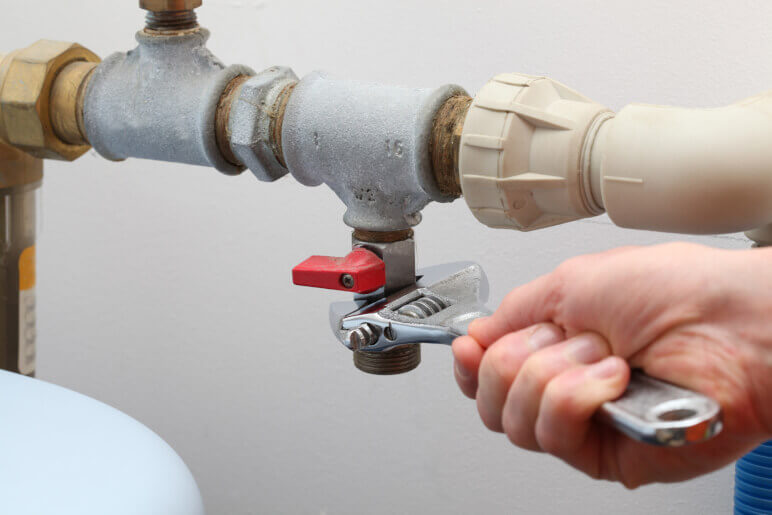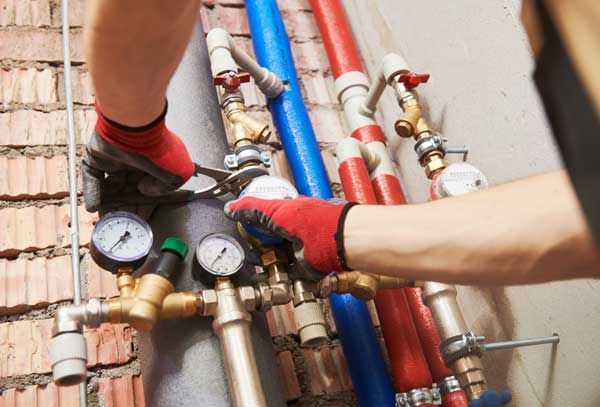Essential Bathroom Plumbing Tips for First-Time Home Buyers
Essential Bathroom Plumbing Tips for First-Time Home Buyers
Blog Article
What're your concepts on Essential DIY Bathroom Plumbing Tips Every Homeowner?

For brand-new house owners, understanding and maintaining washroom pipes can save both time and money by stopping costly concerns down the line. Right here are some important bathroom pipes suggestions to help you maintain whatever running efficiently.
Plan For Cold Weather
Safeguard your pipes from cold during winter by shielding pipes in unheated locations like cellars, attics, and garages. Throughout severe chilly, allow cold water drip from faucets offered by subjected pipelines to help protect against cold.
Schedule Routine Maintenance
Think about scheduling annual examinations with an accredited plumbing. They can detect problems that you could miss, such as concealed leakages or wear and tear on pipelines and fixtures. Normal upkeep aids expand the life of your pipes system and can stop emergencies.
Familiarize Yourself with the Main Shut-Off Valve
Recognizing where the primary water shut-off shutoff is located in your house is vital. This allows you to rapidly switch off the water supply in case of major leakages or throughout pipes emergency situations, protecting against comprehensive water damage.
Regularly Examine for Leaks
Little leakages can result in big issues. Frequently examine under sinks, around commodes, and near plumbing fixtures for any kind of indications of leaks. Seek wetness, small drips, or rust. Catching and repairing leaks early can avoid a lot more significant damage and save water.
Maintain Your Water Heater
Guarantee your water heater is set to an ideal temperature level (normally about 120 levels Fahrenheit) to prevent scalding and decrease energy usage. Flush the storage tank every year to eliminate debris build-up, which can reduce the efficiency and lifespan of your heater.
Update Your Components
If your home has older components, take into consideration upgrading to more efficient models. Modern commodes, showerheads, and taps are made to make use of much less water while giving excellent stress, which can substantially minimize your water expense and environmental footprint.
Be Cautious with DIY Plumbing Services
While it's alluring to manage all home repair services on your own, be cautious with pipes. Some problems might require specialist expertise, specifically if they include major water lines or drain repair work. Hiring a specialist can occasionally be a lot more affordable than DIY, especially if it protects against more damage.
Do Not Neglect Slow Drains
If your sink or bathtub is draining pipes gradually, it's frequently a sign of an obstruction developing. Addressing this very early can avoid a full clog. Utilize a plunger or a plumber's serpent to clear out particles. Prevent using chemical drainpipe cleaners as they can harm your pipes with time.
Know What Not to Flush
Bathrooms are not garbage disposals. Prevent flushing anything apart from toilet tissue and human waste. Items like wipes, feminine health products, and cotton bud ought to be taken care of in the garbage to avoid clogs and sewer backups.
Install Strainers in Drains
Location filters in your sink and bath tub drains pipes to capture hair and various other debris before they enter your pipes system. Cleansing the filters regularly will aid prevent accumulation and keep water moving easily.
Verdict
Recognizing and keeping your home's bathroom plumbing can protect against many common issues. By adhering to these necessary tips, you can ensure your restroom stays useful and efficient, saving you money and time in the future.
Things to consider while plumbing your new bathroom
Underground pipes and stormwater drains
Once these have been successfully laid, your plumber will need to test the system to check for water tightness. After this, the area will be filled back with the excavated earth. Backfilling of plumbing works must be done with extreme care because debris or rocks that are backfilled into trenches must not cause any damage to the buried piping. A mixture of backfill needs to be used. For example, if lumpy clay is excavated, then the first 300-500 mm (millimetres) of backfill must consist of sandy, loose earth. On the contrary, if concrete needs to be paved at the top, then crushed and compacted earth should be used, especially when it comes to a deep excavation.
Pipes
Clean water enters the plumbing pipe from the primary water supply line. Unclean water is successfully pulled down by gravity to exit the system of pipes. Air blowing through all the vents ensures that the pipes stay clean and clear. This is a simple and self-sustaining setup that should survive the test of time, when done correctly.
Plumbing items and fixtures
If you are carrying out plumbing in a new house, you need to install plumbing items and fixtures before the completion of the house’s interiors. Showers, sinks, and tubs are easier to install when the doorways and walls have not yet been installed.
Sewer lines and septic tanks
Installing sewer lines and septic tanks is extremely challenging when it comes to a home’s plumbing system. Firstly, you need to know the septic tank’s size. This can be calculated by the total number of bedrooms in your house. The venting system of your septic tank must be flawless.
Placement and positioning of the main stack
The main stack is basically a pipe with a diameter of approximately 3-4 inches. It typically runs from your home’s basement to the terrace or roof. The lower section of the main stack is responsible for collecting wastewater from several other plumbing fixtures. The upper section is used for venting. While you are installing plumbing in your new house, you will need to find a spot where the main stack runs without interruptions.
Installing drains and vents
Drain and vent pipes are generally 1-1.5 inches in diameter. Pipes must slant at a quarter of an inch per foot to drain efficiently. Bends, where the pipes eventually join the main stack, must be smooth and not be angled sharply. Every plumbing fixture must have a trap beneath it, which will catch water and prevent obnoxious gases from gaining entry into your living quarters. Moreover, every fixture needs to be vented.
Waterproofing and final testing
Your plumber will most likely carry out waterproofing of retaining walls, lower rooms, and basements, where an underground sump is generally constructed to store water. Roofs, too, need specialised treatment, and plumbers need to take into account gutter overflows in regions that receive heavy rainfall.
After the complete plumbing has been installed in your new home, every single thing should be tested to ensure adequate functionality and immaculate efficiency. This includes all water supply sources, bathroom fixtures, and sewerage.
https://www.jswonehomes.com/blogs/Construction/things-to-consider-when-plumbing-your-new-bathroom

Book Inspection Report this page